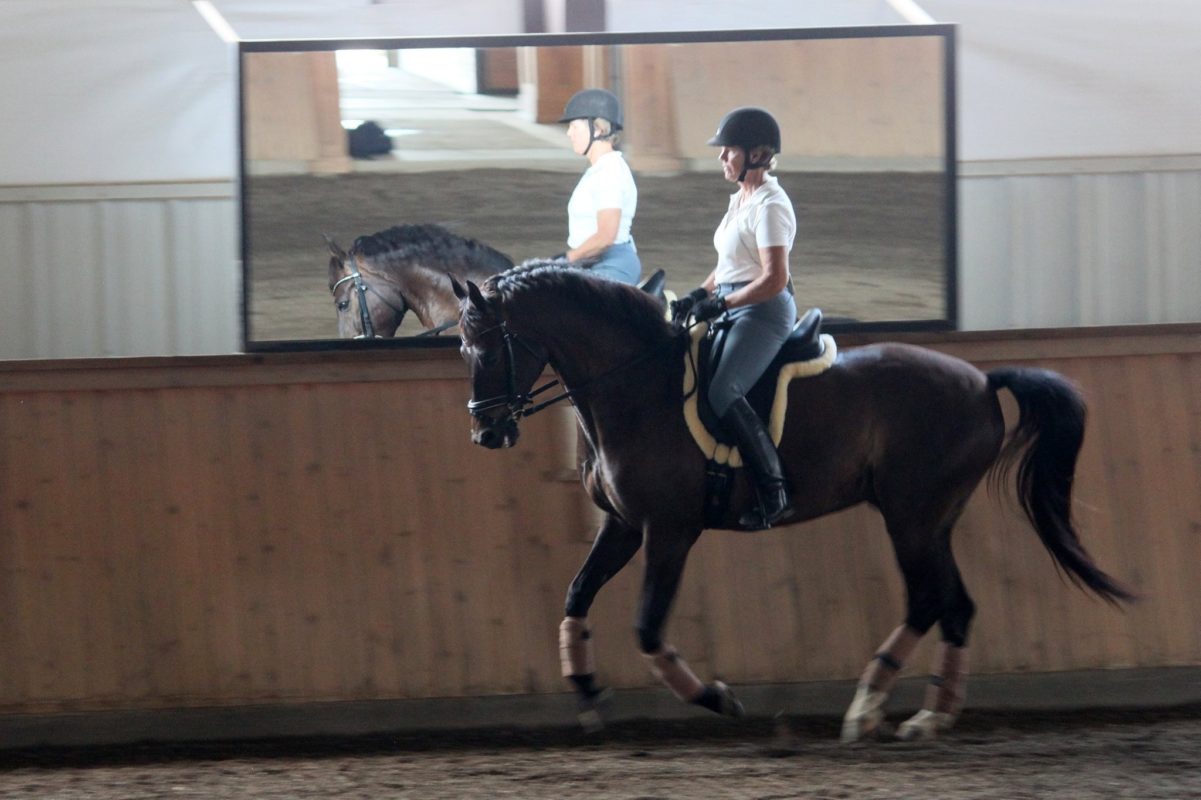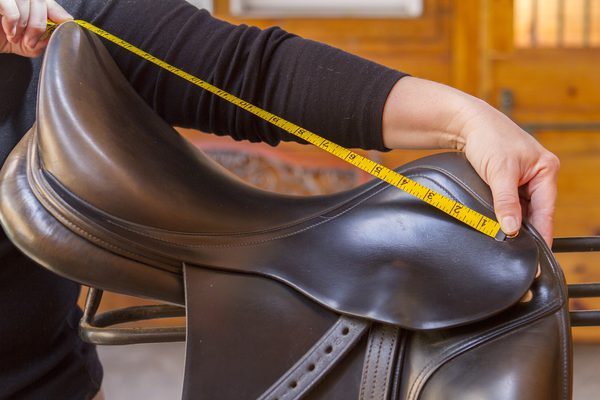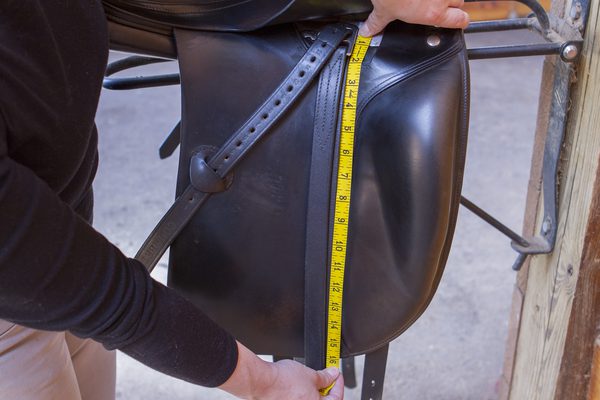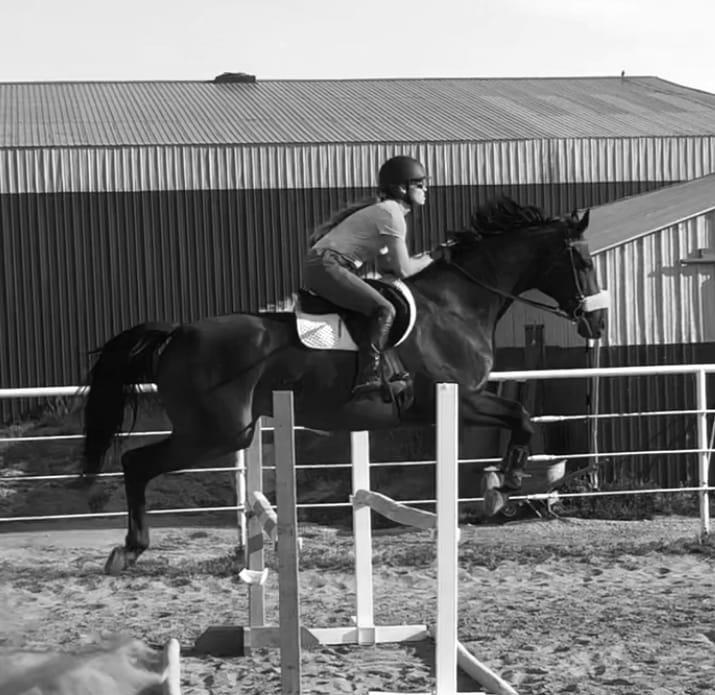Saddles
Choosing a Saddle that is Right for the Rider
Choosing a saddle that is right for the rider is equally important to choosing one that is right for the horse. Some of the things we need to address is obvious: Seat Size, Flap Length, the Comfort Factor. Other factors are less obvious: Twist Width, Seat Width, Leg support size and placement. Even more tricky is Seat Balance, Distance between seat balance point and stirrup bar, Special points for complex rider issues.
Taking each of these issues one at a time, keep in mind we are all imperfect and acknowledging those imperfections allows us to be the best we can be at riding.
Seat Size is slightly different for jumping and dressage saddles, mainly because of the rider balance position. In general, when the rider is sitting straight and square in the saddle we want about 3″ room in front of and behind the rider. Some like more, some like less but that is a place to start. We would love to be able to say, “I take a 17 inch seat” but the reality is as bad as jean sizes. Seats are measured from the middle of the button at the front to the center of the cantle, so it depends on where that button is placed along with other variables so Don’t get hung up on the size.
Flap Length/Angle is important to provide protection, support and should assist the rider, not be an obstacle. In dressage we want the flap to extend at least 2″ from where the top of the boot should be. If it is shorter, the boot will get hung up on the flap and if too long it will be hard for the rider to get her leg on the horse. The angle of the flap should match the angle of the rider’s thigh when riding in the optimum position FOR THAT PARTICULAR RIDER, not an ideal and not for the trainer as that is often different. In jumping the same elements hold true with the idea that sometimes the rider will be doing flat work and needs to be able to lengthen the stirrups accordingly. The flap needs to accommodate both the flat and the jumping position. Again, we would like to say we need a particular length flap, but that is impractical because the length of flap and the angle of the flap both come into play and there is much variation by manufacturer.
Comfort Factor is an important element and often the more complex issues will show up to the rider in the way of comfort. Sometimes it has to do with seat padding and the type of tree as some are softer than others. Most of the time I find as a Professional Saddle Fitter that when we address the fine tuning of support for the individual rider, seat padding is a minor issue. As an analogy, you can put all the inserts you want into a shoe that doesn’t fit correctly and the shoe will still be uncomfortable. So here we go with the tricky stuff!
Twist/Waist Width and Shape is that area called the pommel. What works for one person will not work for another because we are all shaped very differently in the pelvis. Those who tend to like a narrow twist are individuals: adolescents and others with narrow hips, tight through the hips for a variety of reasons, low back issues, jumper riders new to dressage riding. Those that like a wider twist are those: with open hips, loose hip and pelvis that needs the support of the waist of the saddle, many men that are larger, supple riders who have ridden consistently since a young age. Nuances have to do with security or the illusion of security. A rider wanting a deep seat often wants a high cantle and a pommel that rises quickly, locking them into a position. This is often good for the new rider needing to establish a good position.
Seat Width is the distance across the seat where the seat bones are placed. This is often ignored, but if a rider’s seat bones are wider than the distance across the seat, the seat bones become very very sore plus it is very hard to find the middle of the saddle since the seat bones are often sliding off one side or the other. If the seat is too wide for the rider, say a youth riding in mom’s saddle, they can’t get around that area and are forced to ride in a chair seat which is legs in front of the center of balance.
Leg Support Size and Placement should support the position without pressure in a neutral position. Knee rolls in dressage or jumping that put pressure on the kneecap is going to be a problem. The rider should be able to sit relaxed in a neutral position and the knee roll should not press into the leg, or vice versa. The leg needs to be able to move unobstructed while riding to follow the horse’s movement and to provide subtle aids. Too much leg block does just that – it blocks the leg. Too little or badly placed blocks do no good and most of us would like help now and then from our saddle.
Seat Balance should be centered with the deepest part of the seat over the center of balance of the rider. Some saddles for a particular purpose, say a jumper saddle for significant jumps may want the balance to be slightly further back. It is best to know what you are after when considering this. The stirrup bars should be placed accordingly so that the leg hangs under the center of balance of the rider.
Many Special Issues come up when fitting saddles for riders. The older rider may be less supple and require a particular leg position. Low back issues come up a lot and orientation of the pelvis is critical to keep that rider out of pain and able to move easily and independently on the horse. Fitting saddles for children is critical to establish a good, secure position for them. Scoliosis is more common that we think and must be addressed to allow that rider to achieve the best possible symmetry.
Questions? Comments? = ‘Contact Us’ We would love to help!




